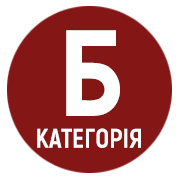ЗАСТОСУВАННЯ ІГС GEOGEBRA ПРИ ВИВЧЕННІ ВИЩОЇ МАТЕМАТИКИ СТУДЕНТАМИ ТЕХНІЧНИХ ЗАКЛАДІВ ВИЩОЇ ОСВІТИ
DOI:
https://doi.org/10.32782/2410-2075-2022-14.4Ключові слова:
візуалізація, інтерактивне геометричне середовище, GeoGebra, технічний ЗВО, еліпс, гіпербола, парабола.Анотація
Останнім часом стало актуальним використання різних пакетів систем комп'ютерної математики з підвищення ефективності освітнього процесу. У статті обґрунтовується значущість використання когнітивно-візуального підходу у процесі навчання студентів технічних спеціальностей вищої математики у ЗВО, розглядається сутність цього підходу, а також його реалізація у процесі викладання курсу вищої математики з використанням програмних продуктів освітнього призначення. Розглянуто можливості окремих програмних продуктів професійного та освітнього призначення, перераховано переваги інтерактивного геометричного середовища GeoGebra, наведено приклад його використання у процесі навчання вищої математики студентів технічних ЗВО, а саме: розглядаються можливості застосування названого середовища з метою організації дослідницької діяльності студентів під час практичних занять з вищої математики, зокрема і дистанційних, та застосування для створення кривих зображень другого порядку, що дозволяє забезпечити візуалізацію геометричних об'єктів, що вивчаються. GeoGebra полегшує створення математичних побудов та моделей студентами, які дозволяють проводити інтерактивні дослідження при переміщенні об'єктів та зміні параметрів.
Посилання
Балик Н. Р. Підходи та особливості сучасної STEM-освіти. Фізико-математична освіта. 2017. № 2 (12). С. 26–30.
Гриб'юк О. О. Використання системи динамічної математики GEOGEBRA в процесі навчання математичних дисциплін / Гриб'юк О.О., Юнчик В.Л. Освітні горизонти. Інформаційно-методичний вісник. 2016. № 74. С. 508–514.
Далингер В. А. Обучение математике на основе когнитивно-визуального подхода. Вестн. Брян. гос. ун-та. 2011. № 1. C. 297–303. 4. Друшляк М. Г. Навчання майбутніх вчителів математики розв’язувати задачі теорії графів із використанням GeoGebra / Друшляк М. Г., Лукашова Т. Д., Скасків Л. В. Фізикоматематична освіта. 2019. Вип. 1. С. 35–40.
Жалдак М.І., Горошко Ю.В., Вінниченко Є.Ф. Математика з комп’ютером : Посібник для вчителів. К. : РННЦ “ДНІТ”, 2004. 255 с.
Кушнір В. А. Розв’язування математичних задач інтегративного змісту засобами комп’ютерного моделювання / Кушнір В. А., Ріжняк Р. Я. Математика в школі. 2009. № 10 (97). С. 111–135.
Navetta, A. Visualizing functions of complex numbers using Geogebra. North American GeoGebra Journal. 2016. № 5. URL: https://cutt.ly/EhOIfJw (дата звернення: 10.02.2022).
Ракута В. М. Бібліотека комп’ютерних моделей, як необхідна складова сучасного навчального середовища. Наукові записки. Серія : Педагогічні науки. Кіровоград: РВВ КДПУ ім. В. Винниченка, 2011. № 98. С. 246–249.
Ракута В. М. Система динамічної математики GeoGebra як інноваційний засіб для вивчення математики. Інформаційні технології і засоби навчання. 2012. № 4 (30). URL: http://journal.iitta.gov.ua/ index.php/itlt/article/view/700/524#.VVzCkvntnZE (дата звернення: 10.02.2022).
Сербис И. Н. Использование интерактивной геометрической среды при обучении школьников планиметрии. Изв. РГПУ им. А.И. Герцена. 2008. № 63-2. С. 176–179.







